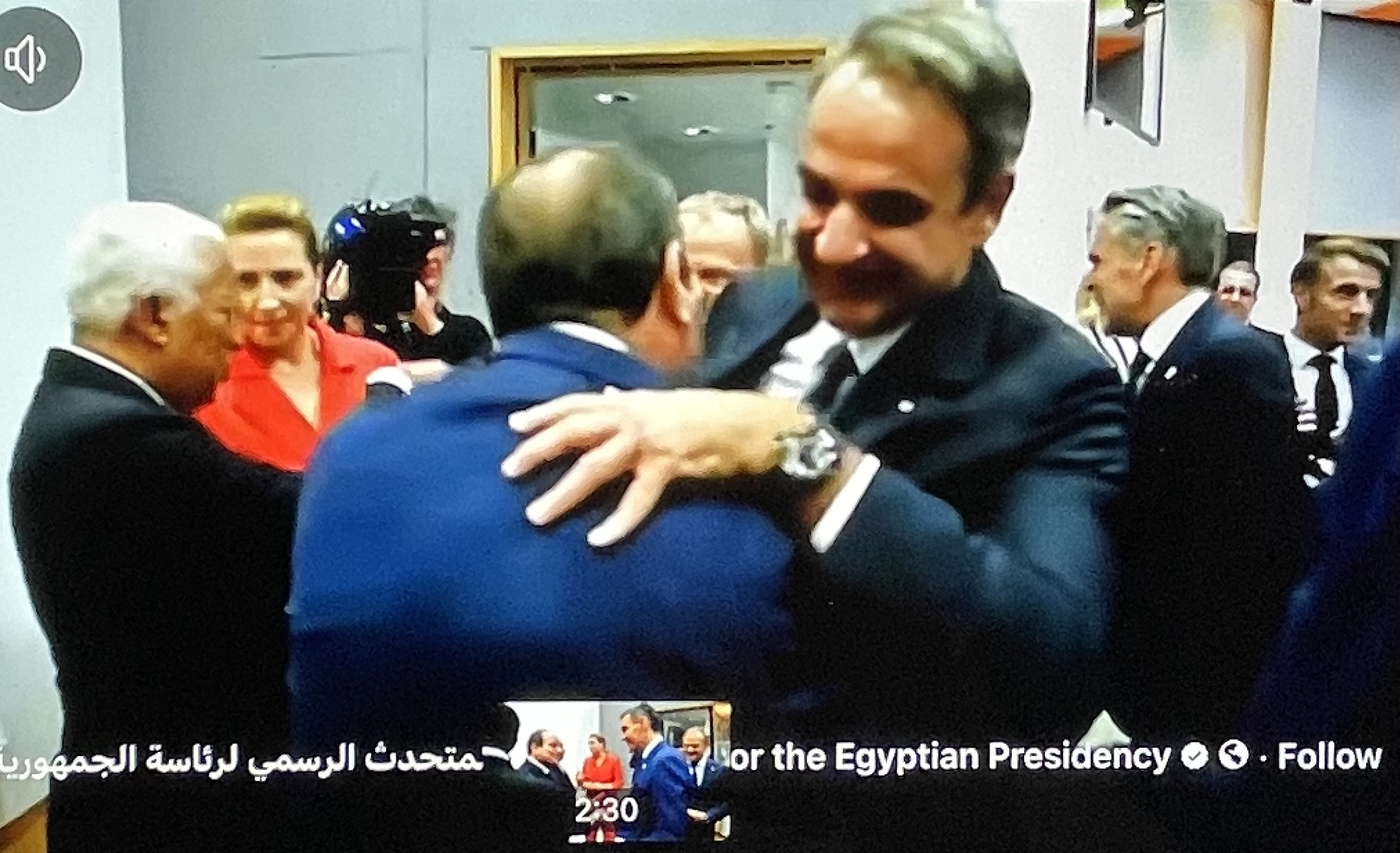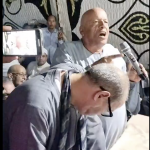By Coptic Solidarity –
For over fifteen centuries, the Monastery of St Catherine at the foot of Mount Sinai has stood as one of the most remarkable spiritual, cultural, and historical landmarks of humanity. Founded under Emperor Justinian in the 6th century, and protected across eras by Byzantine chrysobulls, the Achtiname, Mamluk decrees, Ottoman firmans, and modern international conventions, the monastery’s status and autonomy have survived empire, invasion, and shifting borders.
Yet today, what centuries of conquests could not undermine may be at risk through political maneuvering, diplomatic pressure, and a carefully orchestrated narrative of “mutual understanding.”
Silence Around the Legal Process: Familiar Script
A session of Egypt’s Court of Cassation has yet to take place, and no date has been announced. Lawyers are either intimidated or under the influence and direction of Egypt’s authorities. But this absence of clarity is itself notable. In legal cases of such magnitude, dates or delays rarely reflect mere administrative issues. Rather, they often signal parallel negotiations outside the courtroom — negotiations intended to shape the legal outcome by predetermining the acceptable “solution.”
Observers familiar with the file describe ongoing procedural choreography, where legal processes and political diplomacy advance in alternating steps designed to converge toward a single desired result.
This is not new. It follows a familiar pattern in which judicial and executive tracks reinforce one another in a pre-arranged direction. While the courts provide the formal legal language, the underlying terms are shaped politically in advance. The aim is to produce the appearance of a consensual settlement, while the actual substance of ownership and control is quietly altered. This method avoids public confrontation, but results in irreversible shifts. The “solution” is presented as reasonable, balanced, and historically sensitive — yet the monastery’s legal position is weakened in the process. What remains is respect in symbolic terms, while authority over land, administration, and governance shifts away from the monastery.
Cairo’s Global Public Relations Campaign
On November 1, Egypt will inaugurate the long-awaited Grand Egyptian Museum — a global media event projected to showcase Egypt as a leading custodian of world heritage. This moment provides Cairo with global attention, positive cultural credibility, tourism and investment visibility, and above all diplomatic goodwill.
And it appears that a parallel “announcement” may be prepared: a so-called “agreement” regarding St Catherine’s Monastery. The timing would be no coincidence — it would allow Egypt to present the monastery’s status as settled, consensual, and harmonious, drowning any objections under the weight of massive global coverage.
Athens: From Guardian to Facilitator?
What concerns many in the ecclesiastical, cultural and diplomatic spheres is that Athens appears no longer to be standing as the firm protector of the monastery’s centuries-old Status Quo.
Recent troubling developments indicate Greek officials signaling that negotiations are already settled, even where no consensus exists. Communications to international partners implying that the monastery’s leadership is aligned with the “agreement.” On the other hand, there seem to be limited, late, or no consultation with the Ecumenical Patriarchate or the Greek Orthodox Archdiocese, both of which traditionally have a say in matters affecting the spiritual and canonical identity of a major Orthodox monastic center.

This shift reflects a broader geopolitical calculation. The Greek government is currently pursuing strategic energy cooperation with Egypt and expanded Eastern Mediterranean security coordination. Also, multibillion-euro economic agreements are in the works.
In this context, the monastery risks becoming a bargaining chip — a “manageable” issue accommodated for the sake of larger state interests.
Furthermore, some Greek political analysts have raised some sensitive but legitimate concerns on conflict of interest. For example, the father-in-law of the current Greek Minister of Foreign Affairs is reported to be involved in a major Greek energy consortium with commercial dealings in Egypt. Whether this connection plays any direct role is unclear.
Yet in diplomacy, the fragrance of conflict of interest is often as influential as the fact of it. The perception that financial considerations may overlap with cultural and religious heritage negotiations damages public trust and weakens Greece’s moral posture in defending Orthodoxy abroad.
The New Abbot and the Pressure of Timing
The recent election of the monastery’s new abbot has become a decisive factor. Insiders report that the electoral landscape was shaped in ways that narrowed the range of candidates. In other words, the Brotherhood voted — yet the environment was neither free of pressure nor politically neutral.
The new abbot’s formal enthronement as Archbishop is expected imminently. Once enthroned, Egypt is expected to issue the Presidential Decree that governs the status of the Sinai Monastery. According to such Decree, traditionally Egypt does not recognise legal personality to the monastery but simply confers powers to the abbot. This means that only the abbot is granted Egyptian nationality and his signature carries the full legal authority to commit the monastery on any legal matters. All the other fathers live on temporary visas from the Egyptian state and have no power to sign, even though the constitutional documents of the Brotherhood require joint decision and signature. That way, Egypt keeps the status and internal affairs of the monastery under its control. It can also delay the issue of the Decree to exercise pressure on the abbot to sign a settlement deal and to render the monastery’s representation in court impossible.
On the other hand, some reports indicate that the Greek Government –- in particular its Minister of Foreign Affairs –- is reported to be exerting strong pressures on the new abbot to sign the agreement, however subjected to constraints imposed by Cairo.
The Brotherhood may resist — strongly, sincerely, and spiritually — but their collective will does not hold legal veto power over the abbot’s signature once confirmed by presidential decree. This is why the timing matters. If a signature occurs before internal consensus, the monastery’s property, autonomy, and heritage stewardship could be irreversibly weakened, even if framed publicly as “cooperation” and “mutual respect.”
Within the monastery, sources indicate distress among senior monks regarding the content and implications of the proposed agreement, as well as frustration over lack of transparency, including the suggestion that only partial or redacted versions of the proposal have been shared internally. There is also deep concern that accepting any compromise now would enable future administrative, developmental, or custodial encroachments. At great risk are the priceless, centuries-old unique treasures, and who would have oversight on them.
The Brotherhood leadership appears determined to resist, but resistance is constrained by ecclesiastical obedience, political vulnerability as well as isolation from broader Orthodox institutional support. Their dilemma is stark: to sign may be to end autonomy; to refuse may bring retaliation.
UNESCO
The monastery’s uniqueness is recognized in its inscription as a UNESCO World Heritage site. But UNESCO protection concerns the physical fabric, environmental context, and cultural value of the site — not its ownership, administrative governance, or ecclesiastical authority. In other words, even though in its nomination of the Monastery for the UNESCO Egypt formally acknowledged the ownership of the Greek Orthodox Diocese of Sinai over St. Catherine’s Monastery, its chapels, gardens, and all facilities, once the administrative or legal status shifts, UNESCO cannot restore it. “Preserving character” is not a substitute for preserving autonomy. A monastery can be beautifully conserved yet spiritually dispossessed.
Egypt’s language also dovetails with UNESCO’s bureaucratic idiom. UNESCO conventions speak of “protecting heritage” and “preserving cultural value,” never of private or ecclesiastical ownership. By framing the issue as heritage preservation, Cairo anchors the monastery within international vocabulary that emphasises conservation, not control. Thus, international bodies are likely to applaud Egypt’s “commitment to protect the site” without realising that such protection presupposes state custodianship.
The concern deepens with the election of Dr Khaled El-Anany as UNESCO’s incoming Director-General, who is expected to assume his function on November, 7. As Egypt’s Minister of Antiquities (2016–2022), he oversaw the very department that pursued legal action against the monastery. With El-Anany now at UNESCO’s helm, are there any real chances that the organization will stand up to Egypt?
A Moment of Decision
The core issue is not tourism access, restoration cooperation, or nominal “shared development.” The issue is ownership, sovereignty, and heritage governance. Once the Status Quo is ended or even diluted, the monastery risks being redefined as Egyptian national heritage under state custodianship, and the monastic autonomy could be replaced by administrative oversight. The Greek Orthodox identity could shift into ceremonial symbolism rather than actual stewardship.
This is not speculation. It is the pattern seen in prior cases such as the Monastery of St Macarius in Wadi el-Natroun. The repositioning of cultural sites under “national heritage protection” represents a profound danger. The language is always the same: “Preservation,” “sustainable development,” “shared cultural value.” Yet the outcome is always centralized state control.
The coming days — not months — may determine the monastery’s future.
If the enthronement proceeds and the signature is taken in its shadow, the monastery’s 1,500 years of spiritual independence may be transformed in a single act into state-managed heritage property.
If the monks’ resistance holds, and if ecclesiastical, scholarly, diplomatic, and public voices speak now, the Status Quo may yet be preserved.
The fact is that this is not a dispute over land, walls, or buildings. It is a struggle over memory, inheritance and identity.
If St Catherine’s becomes heritage without guardianship, presence without sovereignty, and prayer without autonomy, the loss will not be the monastery’s alone. It will be a loss to Orthodoxy, a loss to world heritage stewardship, and a loss to historical truth.
The time to speak is now, before the signature that cannot be undone.





